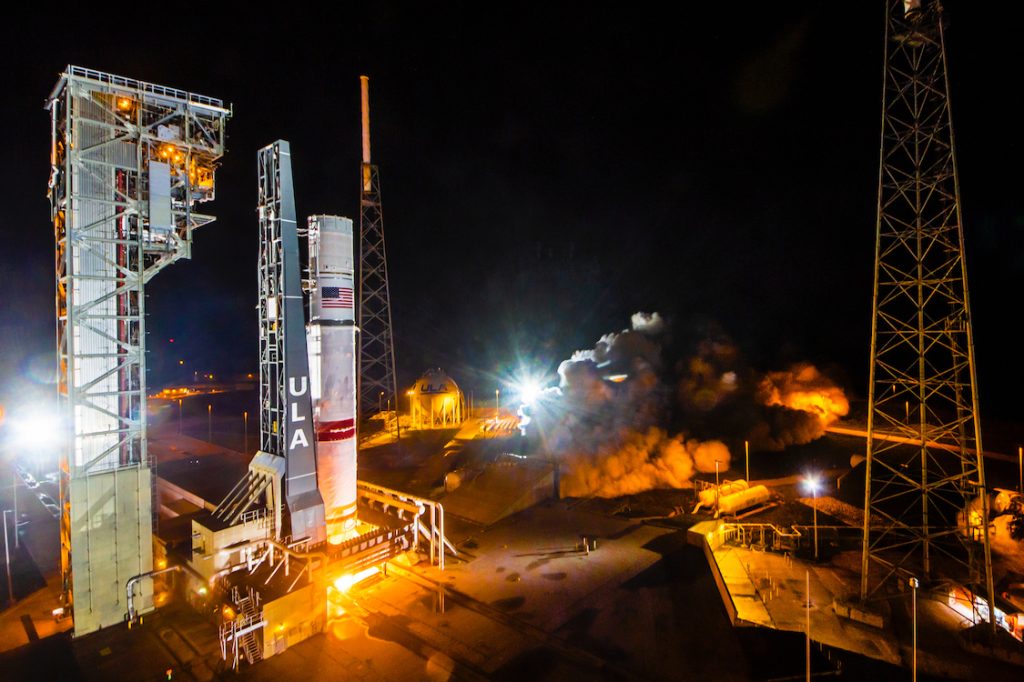
In an interview with CNBC, ULA CEO Tory Bruno said that they plan to fly its new Vulcan every other week by the second half of 2025. This is thanks to their new grasp on the commercial launch market that Vulcan is expected to be able to compete with SpaceX on.
Can ULA really launch every two weeks?
Let’s quickly look at this year’s numbers. SpaceX, ULA’s biggest competitor, has launched its Falcon 9 and Falcon Heavy rockets 76 times in 2023 with a rate of one launch ever 3.88 days. ULA for all of 2023, the undisputed #2 in terms of biggest launch providers in the US, has launched three times – two Atlas Vs and one Delta IV Heavy.
Now is that entirely ULA’s fault they haven’t launched more? A little bit but not 100%. The company’s Atlas and Delta rockets have never gotten that high in launch cadence. Not to forget, ULA as of just three years ago was really only focused on the government launch market. The US Government is not a very high throughput customer.
Also, it’s worth noting that SpaceX, while has an impressive 77 total launches including Starship, only 28 of those were non-Starlink missions.
ULA did plan on launching possibly two crewed Boeing Starliner missions in 2023. However, the first one is now scheduled for no earlier than April 2024 due to issues Boeing caused for itself.
Vulcan has also seen delays. First, because of the first stage engines from Blue Origin, but more importantly from an anomaly found during ground testing on the Centaur V second stage. That has apparently been fixed and Vulcan’s Cert-1 Centaur just needs to be assembled and tested. Cert-1 is scheduled to fly no earlier than December 24.

While the Atlas and Delta won’t ever get to this launch rate, Delta only has one launch left for the NRO next year, and Atlas will be limited to only a handful of customers. Vulcan has been designed to move away from the legacy system so ULA can launch more regularly and just as cost effective than SpaceX.
ULA plans to launch Vulcan a handful of times in 2024, hopefully after Cert-1’s Christmas performance. Then the company hopes to ramp up the Vulcan launch rate to once ever two weeks by mid-2024. Slow by SpaceX standards but blazing fast by ULA’s.
Join our Discord Server: Join the community with forums and chatrooms about space!
Vulcan moving to 50-50 commercial-government split
Since SpaceX came on the scene and ULA was dethroned as a monopoly, the company has never had a foothold for commercial launches. And while I absolutely love Tory Bruno for his charisma, enthusiasm for space, and openness to the general public, there’s one bit of an interview that I think has come back to bite him.
Back in 2020 during an interview with Smarter Everyday, he discussed the market ULA is trying to corner, national security and NASA exploration. ULA has done an amazing job serving this market, but time has certainly changed and tailoring a product just for those customers is falling out of favor. The commercial market for satellite launches is way less volatile and the requirements aren’t as market splitting as it once was.
ULA has moved from gaining a vast majority of the national security launches to possibly loosing a majority when phase 3 adds in a third provider to the mix.
Bruno in his interview with CNBC said that ULA in the past had a 80% reliance on government launch contracts. If you look at the last few years of ULA launches, some years that reliance was more like 100% of the missions. Now Bruno says it expects to split it flights 50-50 between government and commercial launch contracts.
This is what will make ULA’s higher launch rate possible.
There’s some skepticism in the community, I’m part of that a little bit. ULA will have a lot to learn in launching rockets on a regular cadence, something that took SpaceX years to figure out. However, between SpaceX weekly cadence with the Falcon 9, more Starship launches, Rocket Lab Neutron, ULA Vulcan, and all the other companies planning to up their launches. We’re sure in for an exciting time if you enjoy watching rockets fly.
FTC: We use income earning auto affiliate links. More.




Comments